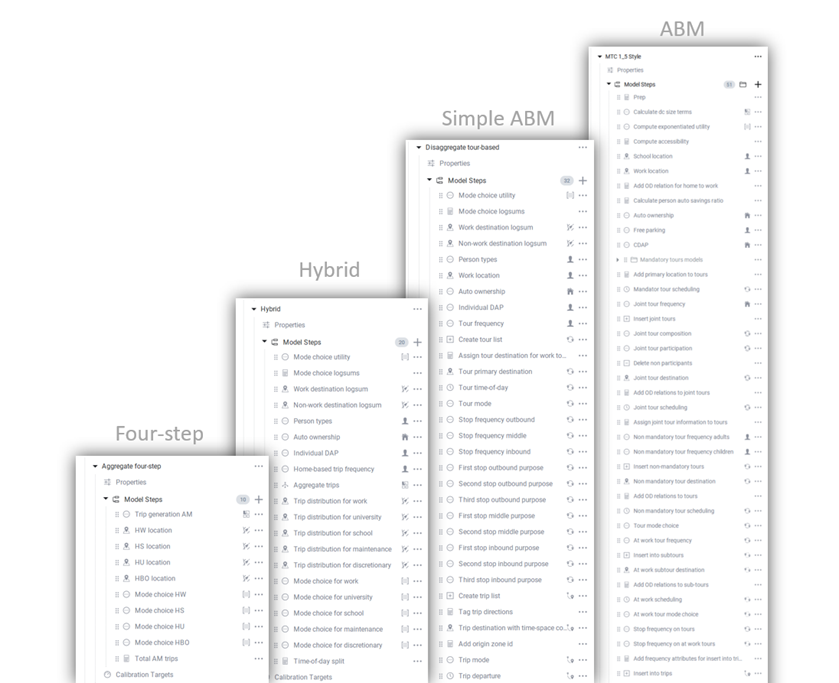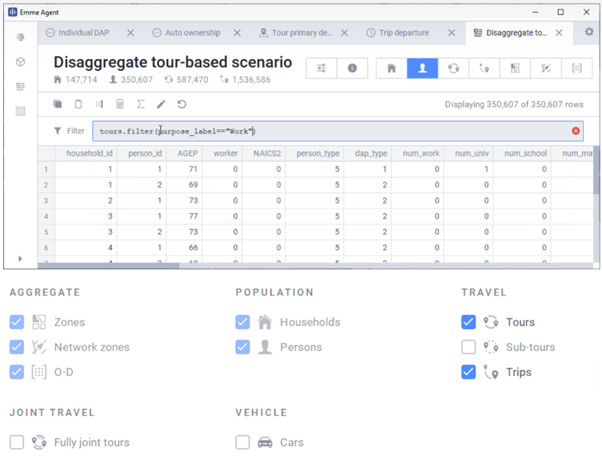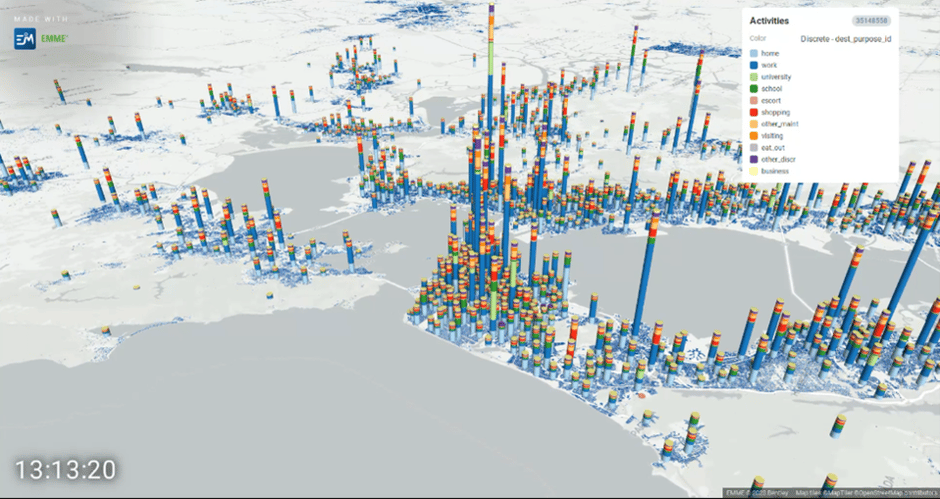Virtuosity Blog
How to Overcome the Top 3 Travel Demand Modeling Challenges with AGENT
“AGENT is a great step up from conventional modeling software. We were amazed by the fast development time, the ease of incorporating steps, the transparency of the models, and the quick runtime”
Jerusalem Transportation Master Plan Team
The Barriers to Advancing Travel Demand Models
Transport planning agencies around the world rely on forecasts from travel models to evaluate mobility infrastructure, policy, and multimodal transport systems. This helps ensure they support the regional demands for accessibility, economic growth, and quality of environment. Today, planners are being asked questions about new mobility trends, including remote work, and new technologies and services, such as autonomous vehicles and mobility as a service. As a result, the travel models that have been used to provide decision support are undergoing generational change, both to capture new sensitivities to individual travel behavior, and to take advantage of new and changing mobility data sources.
In a recent survey conducted by the Mobility Simulation team at Bentley Systems, transport modelers were asked about the challenges they faced in maintaining or advancing their travel demand model in today’s environment. The top three responses, shared by over half of all respondents, were 1) the time/effort to develop a model, 2) the lack of training and staff skills, and 3) difficulty in calibrating models.
The AGENT travel demand modeling platform can help agencies address these challenges, increase the productivity of travel modelers, and foster more agile travel modeling for quicker and more meaningful decision support —, even in the face of new planning questions.
Streamline Model Development
Travel demand models must be carefully designed to support planning decisions and accurately capture local mobility conditions. This creates a remarkable breadth in travel model applications, both across and within agencies, in terms of the model sequences, choices, segmentation, and processing required.
Perhaps because of this variety, travel models today are still implemented in a range of differing technologies, tools, and languages. Even within a single agency, modelers may be required to master knowledge of different programming languages and operating conventions simply to work across model applications. Without any real separation of model configuration, required by modelers, and model processing, required by developers to provide functionality, correctness, and computational performance, too much complexity is exposed to users. This contributes to heavy demands on staff and lengthy model development cycles.
Assemble Travel Models With a Complete Platform
The AGENT travel demand modeling platform introduces the concept of a model package. For the first time, this acts as a general specification for travel demand modeling and enables modelers to formally describe virtually any travel demand model, completely independent from any implementation detail. The model package defines all model inputs and outputs, decision makers, database, segmentation, choice models, and processing. This includes choice sets, utility expressions, and stochastic options as well as overall model structure and sequence. It allows formal description of virtually any travel demand model, is machine- and human-readable, yet is independent of processing engine. The AGENT model package contains only demand model configuration, much in the same way that volume delay functions are understood to be entirely distinct from traffic assignment algorithms.

Model packages in AGENT for trip-based, hybrid and activity-based travel models. Entire model structure, steps, choices and sequence assembled via the AGENT UI.
This leaves the AGENT platform to handle all computational processing and to introduce several key innovations. First, AGENT streamlines and clarifies model development with code-free assembly, offering for the first time a comprehensive user interface to configure any aspect of a travel demand model.
Second, AGENT allows new features, functionality, and computational developments to be advanced from release to release with an emphasis on backwards compatibility and investment preservation for agencies and consultants alike.
Third, with AGENT, agencies no longer need to incur the costs associated with lengthy development initiatives or the maintenance and training of staff on inconsistent model platforms. Since AGENT supports virtually any demand model from trip-based, to tour-based, to activity-based it is possible to freely experiment, compare, and even calibrate models with different model structures in the same model platform.
Finally, AGENT advances possibilities for model calibration.

AGENT provides native data model support required for aggregate and disaggregate modeling. Relational expressions allow efficient model expression and results analysis. Python APIs are also available.
Accelerate Model Calibration
Even with travel models that are easier to assemble, there is still the question of calibration. Over half the modelers who participated in the survey said they need to re-calibrate travel models “very often”, yet none said that this process takes less than 3-6 months, and many said it takes 6-18 months or longer. At the same time, the industry is facing increasingly costly and less reliable household travel surveys which have historically been used for model estimation, while gaining access to big data like O-D estimates and traffic counts which existing travel models cannot directly leverage for calibration. This may explain why almost all the modelers who participated have not yet re-calibrated their travel models with new data since the start of the COVID-19 pandemic. That travel model base often remains several years behind current.
AGENT also makes it possible for modelers to express the rules required for an entirely new automated calibration method that works with virtually any travel demand model structure, from four-step to ABM. Instead of adjusting choice models sequentially, as is done in current and previous practice, automated calibration operates to adjust model coefficients, as configured by modelers, simultaneously on the entire model system for quicker, more consistent, and finer calibrations. Instead of being limited to only one data type, automated calibration can fuse together multiple, disparate data sets including household travel surveys, “big data” O-D and traffic counts, transit fare card data and more by leveraging the travel model as a common denominator.

“MTC 1.5-Style” ABM results produced using AGENT including tour and stop frequency models, intra-household interactions and fully joint tours. Model coefficients adjusted to big data O-D targets using AGENT automated calibration procedure.
Get Started Today
By making travel models easier to assemble, calibrate, and apply, the AGENT travel modeling platform addresses three of the biggest barriers to advancing travel demand models faced by agencies today. AGENT is a solution for travel modelers, and while AGENT removes complexity from implementation detail, it also preserves transparency in modeling tasks; modelers are intended to be in full control of both the data and the models used.


